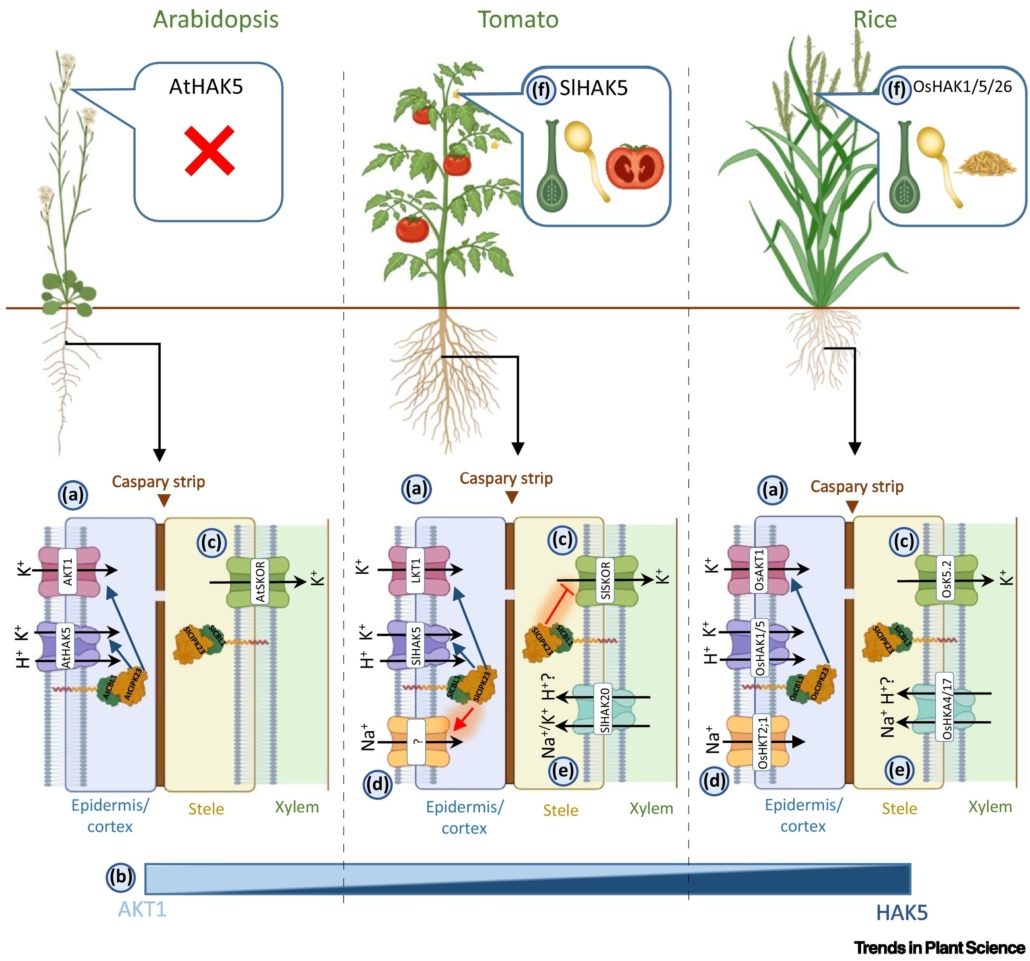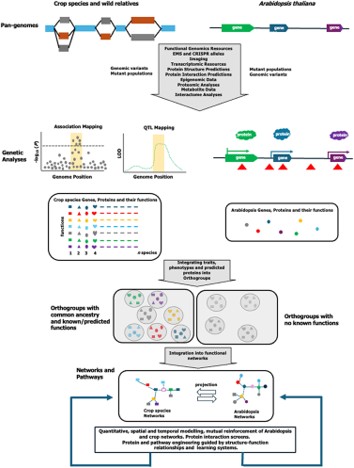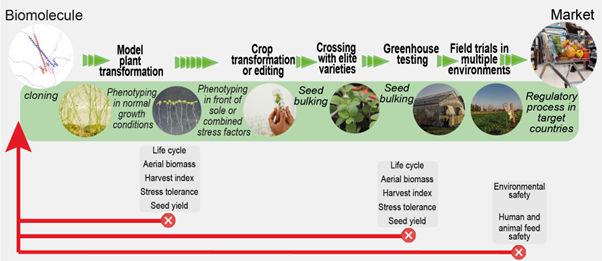
Review. Going beyond the model: When different plants have different plans
Plant Science Research WeeklyIn a recent review, Nieves-Cordones and Rubio highlight the species-specific strategies used by Arabidopsis and crop plants to regulate potassium (K⁺) and sodium (Na⁺) transport, which challenges the universality of Arabidopsis thaliana research. In Arabidopsis, K⁺ uptake is largely mediated by…

Review: Gene discovery, from Arabidopsis to crops
Plant Science Research WeeklyThis year marks the 25th anniversary of the publication of the first genome sequence of a plant, Arabidopsis thaliana, (see https://doi.org/10.1038/35048692). As this review by Bevan et al. observes, this exciting accomplishment was met with some skepticism by those who felt that it was not likely to…

Review: Lost in translation – lessons from concepts that don’t translate from Arabidopsis
Plant Science Research WeeklyThe May 2025 issue of The Plant Cell has a focus on Arabidopsis and how this simple model plant has had an outsized impact on our understanding of pretty much everything botanical (and beyond). Alongside several articles highlighting this impact, this review by Roeder et al. features eight short vignettes…

Review: Translating research from Arabidopsis to crops
Plant Science Research WeeklyThis year marks the 25th anniversary of the publication of the Arabidopsis genome, a milestone that lives large in those of us who experienced it and eagerly envisioned how this new knowledge would be used. The May 2025 issue of The Plant Cell focuses on how research on this little model plant has translated…

Review: Celebrating 150 years of Arabidopsis genetics
Plant Science Research WeeklyThe first known report of an Arabidopsis thaliana mutant appeared approximately 150 years ago (1873). In the intervening years, Arabidopsis has become an essential model for plant genetic research, driving groundbreaking discoveries across multiple disciplines. In a recent review, Yaschenko et al. provide…

When posttranslational modifications meet splicing to regulate stress responses
The Plant Cell: In a NutshellAgrofoglio et al. explore how the methylation of arginine residues on a key splicing factor affects alternative splicing.
Julieta Mateos, María José Iglesias, Yamila Agrofoglio. IFIBYNE-UBA-CONICET
https://doi.org/10.1093/plcell/koae051
Background: Plants are constantly subjected to a variety…

The Cold Survival Game: RHOMBOID-LIKE PROTEASE11 and Arabidopsis' FATTY ACID EXPORT PROTEIN1
The Plant Cell: In a NutshellJohn et al. reveal how degradation of the chloroplast protein FATTY ACID EXPORT PROTEIN1 by RHOMBOID-LIKE PROTEASE11 affects cold tolerance in Arabidopsis.
https://doi.org/10.1093/plcell/koae011
By Annalisa John (AJ) and Ekkehard Neuhaus (HEN) (RPTU Kaiserslautern, Germany)
Background: Plants…

Things to do before you die: The bucket list of a plant cell
The Plant Cell: In a NutshellWang, Bollier, Buono, et al. catalog the cellular processes that occur during programmed cell death in plants.
https://doi.org/10.1093/plcell/koad308
Jie Wang, Tobacco Research Institute, Chinese Academy of Agricultural Sciences, Qingdao, China
Moritz K. Nowack, VIB-UGent Center for Plant Systems…

Nuclear pore Y-complex and regulation of FLOWERING LOCUS C in Arabidopsis
The Plant Cell: In a NutshellHuang et al. explore the functions of the nuclear pore complex in regulating the expression of FLOWERING LOCUS C in plants.
Penghui Huang1,2†, Xiaomei Zhang2†, Zhiyuan Cheng3†
1 Research Institute of Intelligent Computing, Zhejiang Lab, Hangzhou 310012, China
2 MARA Key Laboratory of…

